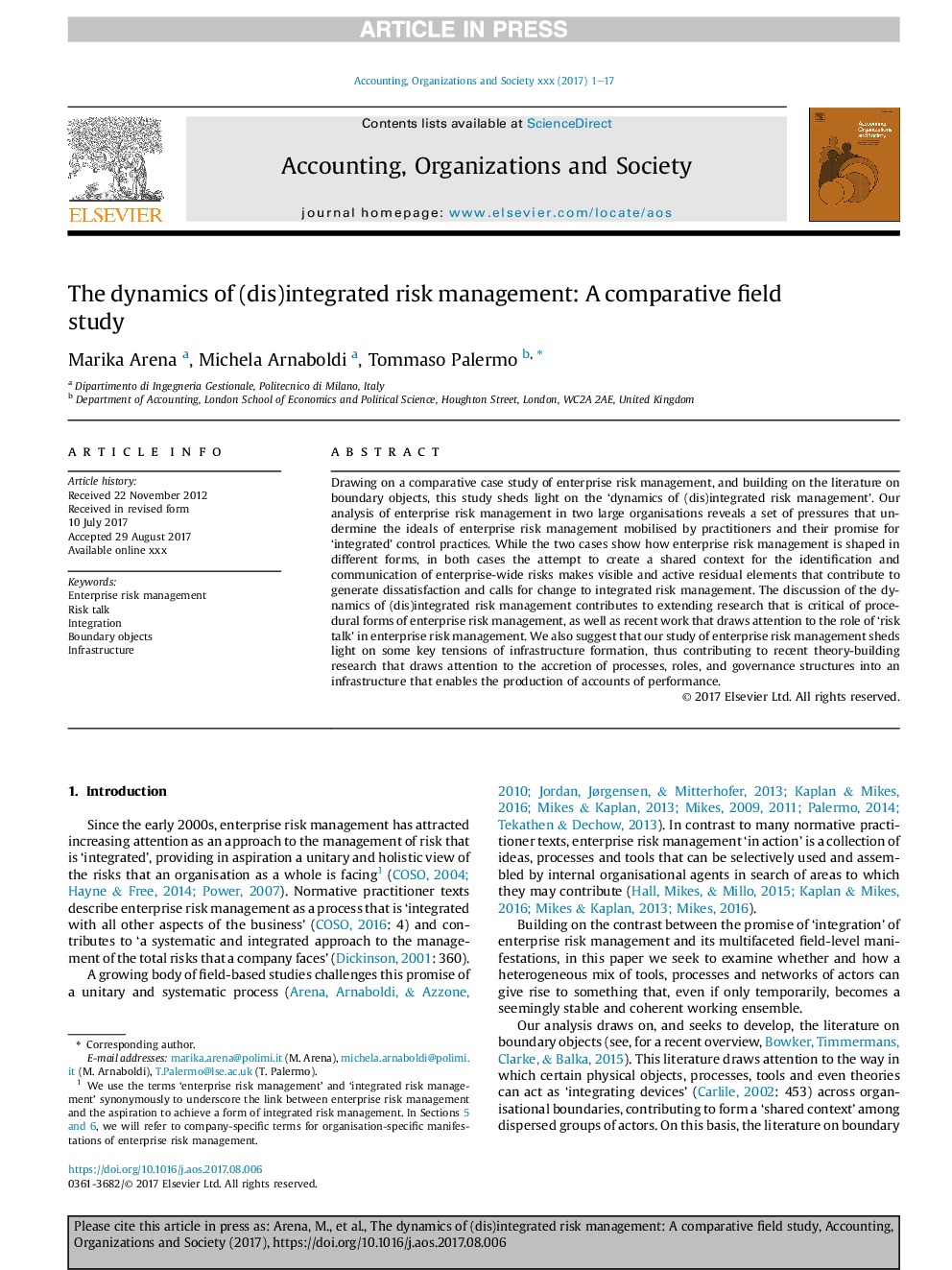| Article ID | Journal | Published Year | Pages | File Type |
|---|---|---|---|---|
| 7239540 | Accounting, Organizations and Society | 2017 | 17 Pages |
Abstract
Drawing on a comparative case study of enterprise risk management, and building on the literature on boundary objects, this study sheds light on the 'dynamics of (dis)integrated risk management'. Our analysis of enterprise risk management in two large organisations reveals a set of pressures that undermine the ideals of enterprise risk management mobilised by practitioners and their promise for 'integrated' control practices. While the two cases show how enterprise risk management is shaped in different forms, in both cases the attempt to create a shared context for the identification and communication of enterprise-wide risks makes visible and active residual elements that contribute to generate dissatisfaction and calls for change to integrated risk management. The discussion of the dynamics of (dis)integrated risk management contributes to extending research that is critical of procedural forms of enterprise risk management, as well as recent work that draws attention to the role of 'risk talk' in enterprise risk management. We also suggest that our study of enterprise risk management sheds light on some key tensions of infrastructure formation, thus contributing to recent theory-building research that draws attention to the accretion of processes, roles, and governance structures into an infrastructure that enables the production of accounts of performance.
Related Topics
Social Sciences and Humanities
Business, Management and Accounting
Accounting
Authors
Marika Arena, Michela Arnaboldi, Tommaso Palermo,
